
How to prune a shrub rose

How to Prune David Austin Shrub Roses for a Thriving Garden
Shrub roses, particularly the renowned David Austin roses, are cherished by gardeners for their beauty and resilience. These versatile plants, known for their abundant blooms and lush foliage, can transform any garden into a vibrant paradise. Understanding how to care for and effectively prune shrub roses is essential for ensuring they thrive. With proper attention, these English roses can provide a spectacular display year after year, making them a favorite among both novice and experienced gardeners.
In This Article
- The History of Shrub Roses
- Why prune shrub roses?
- Our Top Picks
- When to prune shrub roses?
- How to Prune a Shrub Rose?
- Pruning Tools and Techniques
- Common Mistakes to Avoid
- Benefits of Pruning Shrub Roses
- Shrub Rose Care Beyond Pruning
- Organic Fertilizers and Compost
- Mulching and Soil Health
- Dealing with Pests and Diseases
- Hybrid Tea Roses vs. Shrub Roses
- Gardening Tips
- Your Questions, Answered
The History of Shrub Roses
The history of shrub roses is rich and fascinating, with roots dating back to ancient civilizations. The David Austin rose, a notable type of shrub rose, was created in the 20th century by English rose breeder David Austin. His vision was to blend the classic beauty of heritage roses with the modern vigor and repeat blooming of hybrid tea roses. This innovative approach led to the creation of an attractive shrub that offers both fragrant blooms and robust growth. Over the years, shrub roses have gained popularity, becoming a staple in many rose gardens across the globe, admired for their hardiness and stunning flowers.
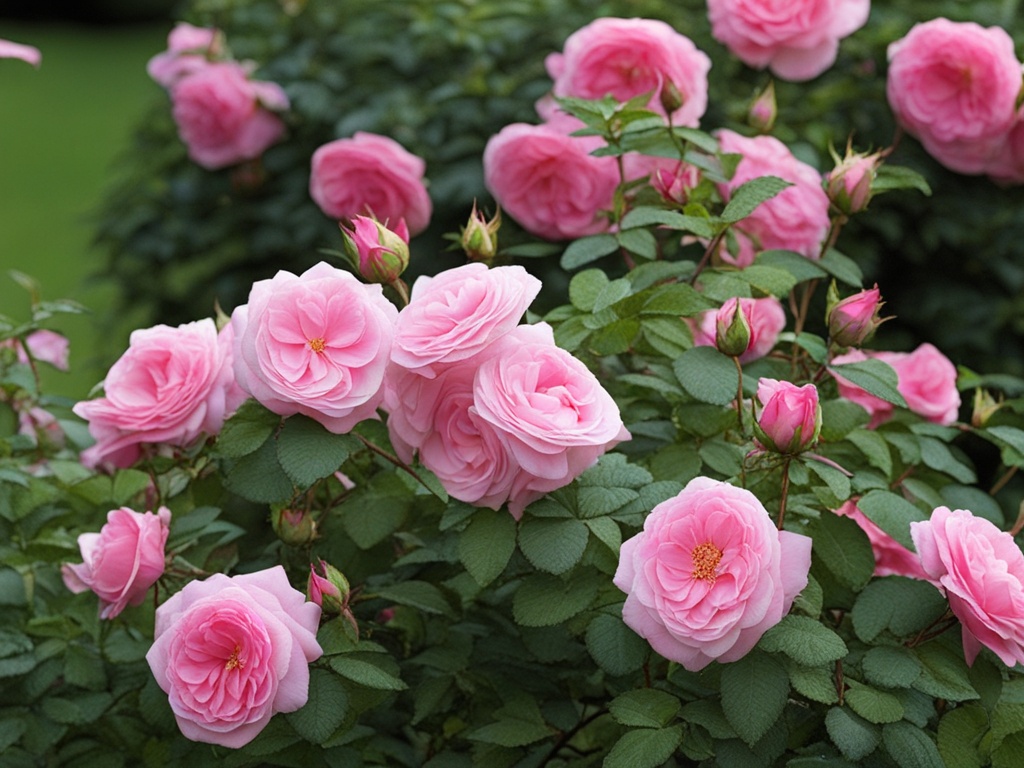
Why prune shrub roses?
Pruning shrub roses is vital for the health and longevity of the plant. The main purpose of pruning is to promote new growth while removing dead, diseased, or damaged wood. By pruning your roses, you can encourage better air circulation, which helps to prevent fungal diseases. Additionally, regular pruning helps shape the shrub, creating a more attractive form and encouraging a prolific bloom. An effective pruning strategy ensures that your shrub rose remains vigorous and produces an abundance of flowers, enhancing the beauty of your garden.
When to Prune Shrub Roses
Timing is critical when it comes to pruning shrub roses. The ideal time to prune your roses is during late winter or early spring, just before the growing season begins. This period allows the plants to recover quickly and encourages new growth as temperatures warm. Pruning too early can expose the plants to harsh winter conditions, while late pruning may hinder blooming. Understanding the right timing for your specific types of roses will ensure that your shrub roses flourish and produce an impressive array of flowers throughout the season.
How to Prune a Shrub Rose
8 BASIC PRUNING STEPS
1. Remove all remaining leaves.
The first step in pruning your David Austin shrub roses is to remove all remaining leaves from the plant. This is crucial as it helps prevent the spread of diseases that may have taken hold during the previous growing season. By simply removing the leaves, you create a clean slate for the plant to focus its energy on new growth and blooming. Additionally, this practice allows you to inspect the rose bush for any signs of pests or diseased wood that may need attention. A clean rose bush not only looks more attractive but also contributes to better air circulation, which is vital for healthy growth.
As you remove the leaves, ensure you are not damaging the stems or canes beneath. This careful approach is essential because any injuries to the plant can lead to further complications, including infections. After you have thoroughly stripped the plant of its foliage, take a moment to assess its overall condition. Look for any signs of stress or health issues that could affect its blooming potential. This initial step sets the foundation for all subsequent pruning tasks, ensuring that your shrub roses are well-prepared for the season ahead.
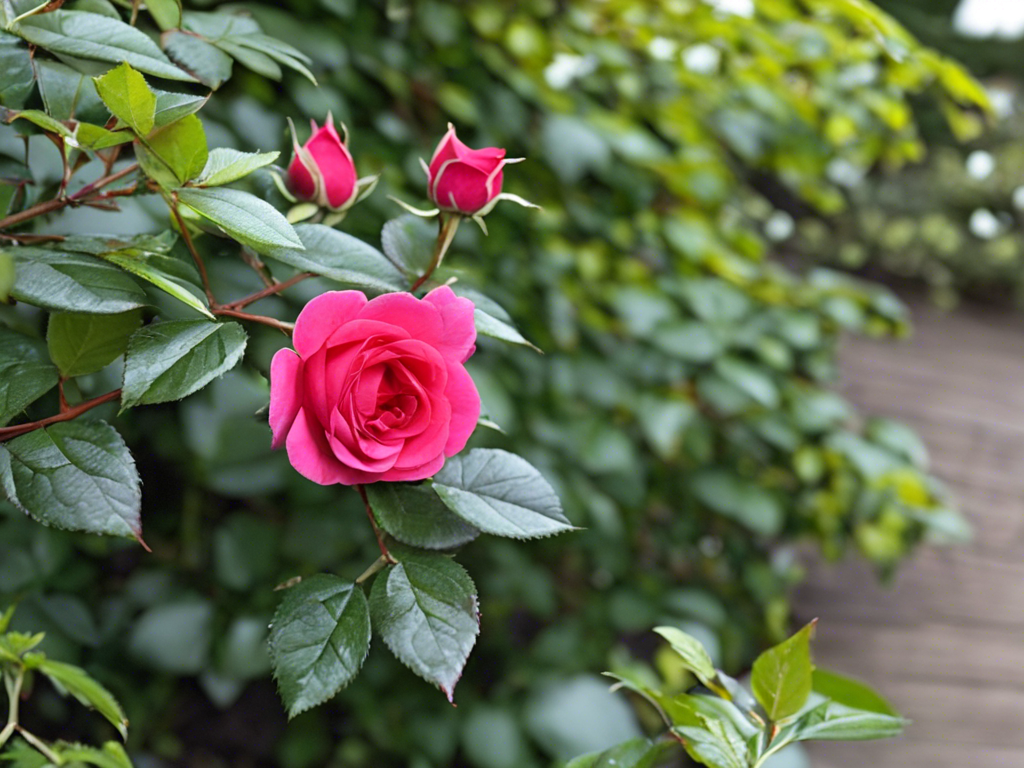
2. Start with dead wood.
After clearing the leaves, the next step is to start with dead wood. This involves identifying and removing any wood that appears lifeless or diseased. Dead wood often detracts from the plant’s vigor and can become a breeding ground for pests and diseases. By removing these parts, you not only enhance the overall health of your shrub but also allow the plant to redirect its energy towards producing new growth and vibrant flowers. Look for canes that are brown or brittle, as they are typically indications of dead wood that should be pruned back.
When you prune dead wood, make sure to cut back to the point where you find healthy wood, which is usually green or has a fresh appearance. This ensures that the plant can heal properly and continue to thrive. Additionally, removing dead wood opens up the center of the shrub, improving air circulation and light penetration, which are critical factors for successful blooming. By prioritizing dead wood removal, you are taking a significant step toward creating a robust and flourishing rose garden. Also read our article on orchid plants indoors And where to buy orchids.
3. Open up the center of the plant.
Opening up the center of the plant is an essential pruning technique that enhances the overall structure and health of your David Austin roses. This step involves selectively removing branches that may be crossing over one another or crowding the center, which can hinder air circulation and light penetration. A well-structured shrub not only looks more attractive but allows sunlight to reach all parts of the plant, promoting vigorous new growth and abundant blooms. When you prune shrub roses, aim for a vase-like shape that encourages an open center.
As you work on the interior of the shrub, keep an eye out for any weak or spindly growth that can be easily removed. This will help strengthen the overall plant by allowing it to focus its resources on the more vigorous canes. Additionally, creating an open center facilitates better airflow, which is crucial for preventing fungal diseases and encouraging healthy flowering. By thoughtfully opening up the plant, you create an ideal environment for your David Austin roses to thrive.
4. Remove any thin, weak growth.
Once you have established a well-structured center, it’s time to remove any thin, weak growth. This type of growth typically does not contribute to the overall health or bloom production of your shrub roses. By pruning these weak stems, you allow the more vigorous canes to take center stage, ensuring that the plant can channel its energy into producing beautiful flowers. It’s essential to distinguish between weak growth and healthy new growth, as the latter should be encouraged rather than removed.
When pruning away the thin growth, make sure to use clean and sharp pruning shears to avoid damaging the plant. A clean cut promotes faster healing and reduces the risk of infection. After removing the weak stems, step back and assess the overall shape of the shrub. You want to achieve a balanced look that allows for maximum light exposure and air circulation. This careful attention to detail will ultimately lead to a more vibrant and healthy rose bush, ready to showcase stunning blooms in the upcoming season.
5. Prune the remaining canes.
With the weak growth removed, the next step is to prune the remaining canes of your David Austin roses. This is where you can really shape the shrub to your liking, creating an attractive form that encourages healthy growth. Prune back the canes to an outward-facing bud, which will help direct new growth outward rather than inward. This technique not only improves the overall aesthetic but also enhances air circulation, reducing the risk of diseases that can plague rose bushes.
When pruning the remaining canes, consider the overall height and shape you desire for your shrub. Generally, David Austin roses benefit from a moderate to heavy pruning, which can stimulate vigorous new growth and ensure an abundance of blooms. Be mindful of the type of rose you are dealing with, as different types of roses may have varying pruning requirements. By thoughtfully pruning the remaining canes, you are setting the stage for a flourishing rose garden that will delight you with its beauty.
6. Seal fresh cuts.
After making your cuts, it’s essential to seal fresh cuts to protect your David Austin shrub roses from potential pests and diseases. Sealing the cuts helps prevent moisture loss and creates a barrier against pathogens that can infiltrate the plant through open wounds. There are various sealants available, including pruning sealants specifically designed for use on roses. Applying the sealant should be done immediately after pruning to ensure the cuts are protected as quickly as possible.
When applying sealant, be careful not to overdo it; a thin layer is usually sufficient. This practice is particularly important for larger cuts, as they are more susceptible to infection. By sealing your fresh cuts, you are taking proactive measures to safeguard the health of your rose bush, allowing it to recover quickly and thrive in the growing season. Maintaining the integrity of the plant is crucial for its success, and sealing cuts is a simple yet effective way to protect your investment in your garden.
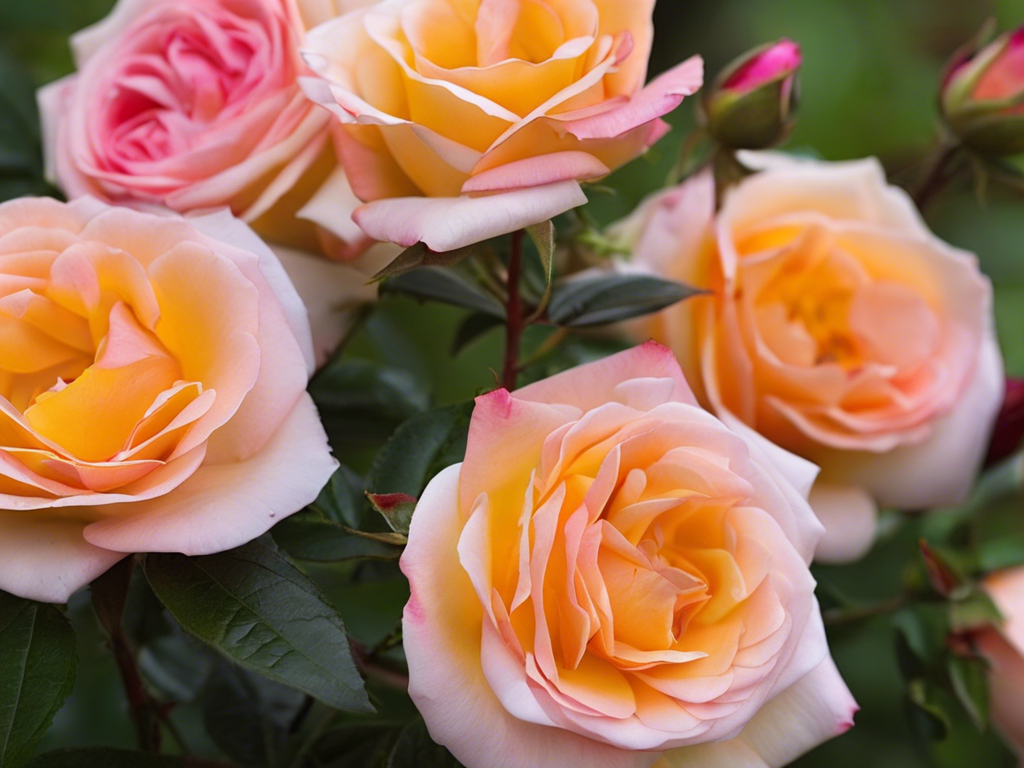
7. Clean up.
Once you have finished pruning your David Austin roses, it’s crucial to clean up the area around your rose garden. This step involves collecting and disposing of all the pruned leaves, stems, and any debris that may harbor pests or diseases. A clean garden not only looks tidier but also minimizes the risk of infection for your rose plants. By removing this organic matter, you are creating an environment that is less hospitable to harmful organisms, ensuring that your roses can thrive.
Additionally, consider composting healthy plant material while discarding any diseased or pest-infested waste. A well-maintained rose garden benefits from good hygiene practices, which can significantly reduce the likelihood of problems in the future. Cleaning up after pruning is a critical step that many gardeners overlook, but it’s an essential part of maintaining the health and beauty of your David Austin shrub roses. A tidy garden not only promotes plant health but also enhances your enjoyment of the space.
8. Feed your roses.
The final step in the pruning process is to feed your roses. After pruning, your David Austin shrub roses will be ready to absorb nutrients that will support their growth and blooming. Choose a high-quality rose fertilizer that provides the necessary nutrients for vigorous growth and abundant flowers. Make sure to follow the manufacturer’s instructions regarding application rates and timing to avoid over-fertilizing, which can harm the plant.
Feeding your roses after pruning helps replenish the nutrients that may have been depleted during the previous growing season. It encourages the plant to focus on producing new growth and ensures that it has the energy needed for a spectacular bloom. Typically, the best time to fertilize is in early spring, just as the growing season begins. By providing proper nutrition, you set your David Austin roses on a path to a thriving and colorful garden.
Pruning Tools and Techniques
Using the right tools is essential for successful rose pruning. Sharp, clean pruning shears are a gardener’s best friend, allowing for precise cuts that minimize damage to the plant. Additionally, loppers may be needed for thicker canes, while a saw can help with larger branches. It’s crucial to disinfect your tools before and after use to prevent the spread of diseases. Proper technique involves making clean cuts at the right angles, which encourages healthy growth and minimizes stress on the shrub rose. Using these tools and techniques effectively will enhance the overall health of your rose garden.
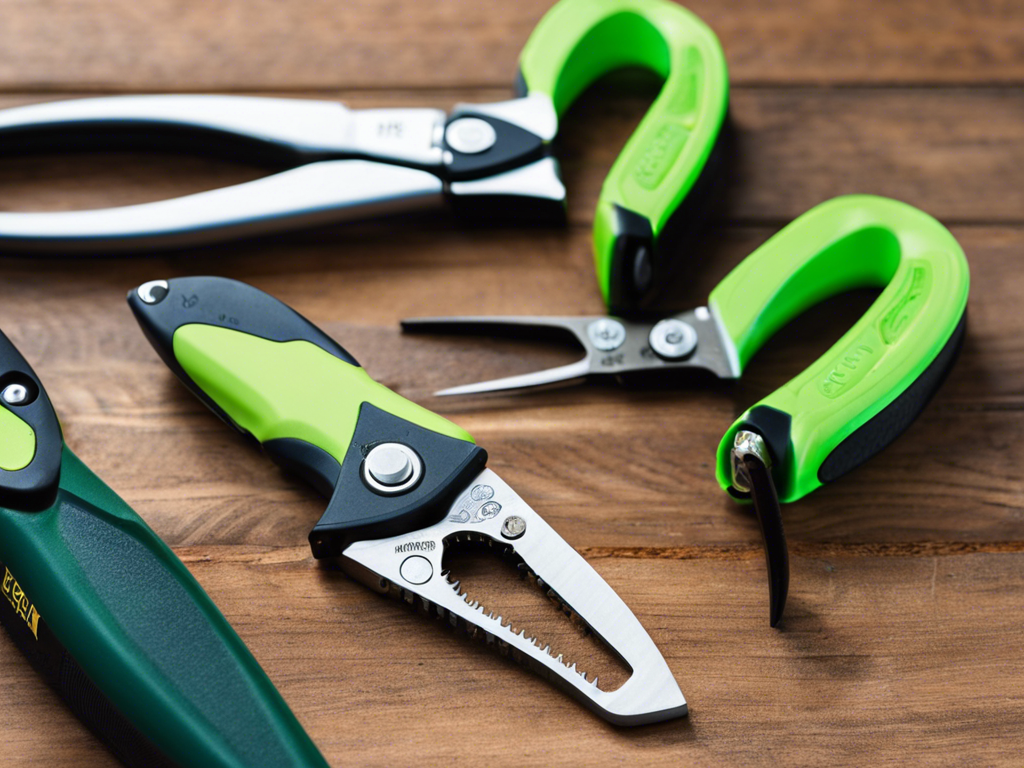
Common Mistakes to Avoid
When it comes to pruning shrub roses, certain common mistakes can hinder their growth and blooming potential. One major error is pruning too aggressively, which can lead to excessive stress and reduced flowering. Another mistake is neglecting to clean your tools, risking the transfer of diseases between plants. Additionally, failing to understand the specific needs of different types of roses can result in improper pruning techniques. Being aware of these pitfalls will help ensure that your pruning efforts yield the best results, allowing your David Austin roses and other shrub roses to flourish.
Benefits of Pruning Shrub Roses
Pruning shrub roses offers numerous benefits that contribute to a thriving garden. Firstly, it promotes new growth, leading to healthier and more vigorous plants. Secondly, regular pruning helps control the size and shape of the rose bush, ensuring it remains manageable and aesthetically pleasing. Moreover, removing dead or diseased wood reduces the risk of pests and diseases, creating a healthier environment for the entire garden. Ultimately, the benefits of pruning extend beyond the individual plant, enhancing the overall beauty and health of your rose garden.
Shrub Rose Care Beyond Pruning
While pruning is a key aspect of shrub rose care, it is not the only consideration for maintaining a healthy garden. Regular watering, especially during dry spells, is crucial for the vitality of your rose plants. Additionally, applying organic fertilizers and compost can enrich the soil, providing essential nutrients that support growth. Monitoring for pests and diseases is equally important, as early intervention can prevent damage. By integrating these care practices with regular pruning, you can ensure that your David Austin roses thrive and produce an abundance of stunning blooms throughout the growing season.
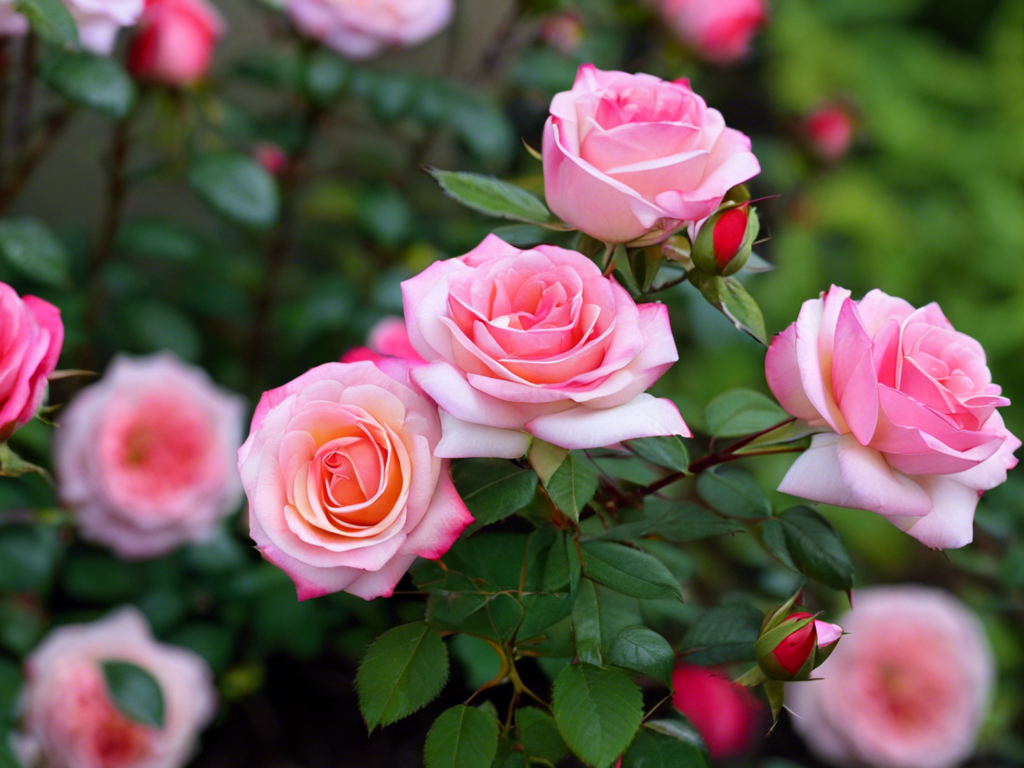
Organic Fertilizers and Compost
Using organic fertilizers and compost is an excellent way to nourish your shrub roses naturally. Organic materials improve soil structure, enhance nutrient availability, and promote beneficial microbial activity in the soil. When applying compost, ensure it is well-aged to prevent any potential harm to the plants. Additionally, organic fertilizers provide a slow-release source of nutrients that support healthy growth without the risk of chemical buildup. Incorporating these natural amendments into your rose garden care routine will help create a thriving environment for your shrub roses, including the exquisite David Austin varieties.
Mulching and Soil Health
Mulching is another essential practice for maintaining soil health in your rose garden. A layer of organic mulch helps retain moisture, suppress weeds, and regulate soil temperature, creating optimal conditions for your shrub roses to thrive. As the mulch breaks down, it enriches the soil, providing additional nutrients to the plants. It’s important to apply mulch correctly, ensuring it is not piled against the base of the rose bush, which can encourage rot. By implementing mulching techniques alongside regular pruning, you can significantly enhance the health and vigor of your David Austin shrub roses.
Dealing with Pests and Diseases
Effective pest and disease management is crucial for the health of your shrub roses. Regularly inspecting your plants for signs of infestations or diseases allows for early intervention. Common pests that affect roses include aphids and spider mites, which can be controlled through natural remedies or insecticidal soap. Equally important is monitoring for fungal diseases, such as powdery mildew, which can be mitigated by ensuring proper air circulation through pruning. By being proactive in dealing with these issues, you can protect your rose garden and ensure that your David Austin roses remain healthy and vibrant.
Hybrid Tea Roses vs. Shrub Roses
When comparing hybrid tea roses and shrub roses, key differences in growth habits and care requirements emerge. Hybrid tea roses are known for their long stems and classic blooms, often requiring more intensive care and maintenance. In contrast, shrub roses, such as the David Austin varieties, are typically more robust and adaptable, thriving with less effort. While hybrid tea roses may require more frequent pruning for shape and bloom production, shrub roses can often endure harsher conditions and still produce beautiful flowers. Understanding these differences allows gardeners to choose the best rose types for their specific needs and preferences.
Gardening Tips
For successful shrub rose gardening, consider a few essential tips. Firstly, ensure your roses receive adequate sunlight, ideally around six hours per day, to promote vigorous growth and blooming. Secondly, pay attention to watering practices; deep, infrequent watering encourages strong root development. Additionally, regularly monitor for pests and diseases, taking immediate action when necessary. Finally, continue to educate yourself on the specific needs of your rose varieties, including David Austin roses, as this knowledge will empower you to provide the best care possible. By implementing these tips, you can create a flourishing garden filled with beautiful shrub roses.
In conclusion, pruning David Austin shrub roses is a rewarding practice that enhances the beauty and health of your garden. Understanding the history, timing, and techniques of pruning, along with proper care strategies such as using organic fertilizers and managing pests, is essential for success. By avoiding common mistakes and focusing on the unique needs of your shrub roses, you can cultivate a thriving rose garden that blooms abundantly year after year. With dedication and care, your David Austin roses will flourish, offering stunning displays that bring joy and beauty to your outdoor space.
Your Questions, Answered
What is the best time to prune shrub roses?
Prune shrub roses in late winter or early spring, before new growth begins.
Related Post

How Can You Improve Your Time Management Skills | 10 Effective Ways
Our editorial team individually chooses every product that is suggested on obonappetite. We might get paid if you buy something

Crispy Chicken Samosa Recipe | Easy, Flavorful & Perfect for Snacks
Our editorial team individually chooses every product that is suggested on obonappetite. We might get paid if you buy something

How to Make Spring Rolls and Peanut Sauce | Fresh, Crunchy and Flavorful Recipe
Our editorial team individually chooses every products of healthy lifestyle that is suggested on obonappetite. We might get paid if









